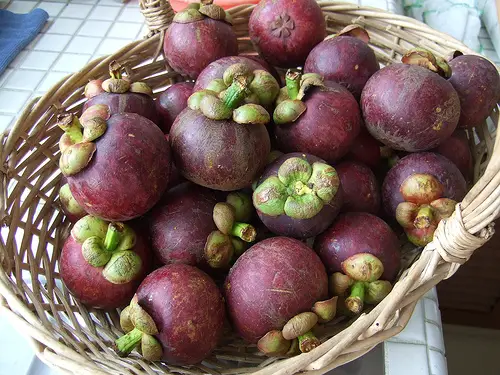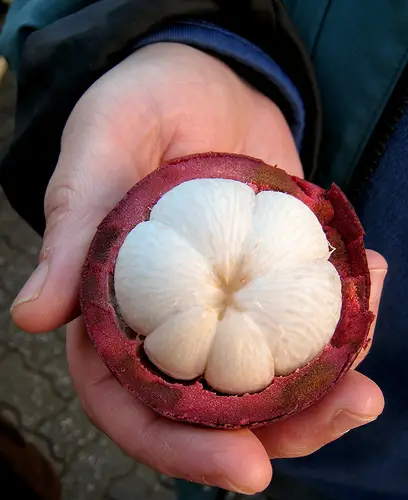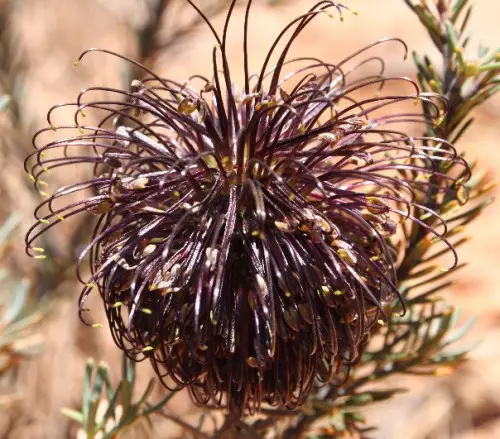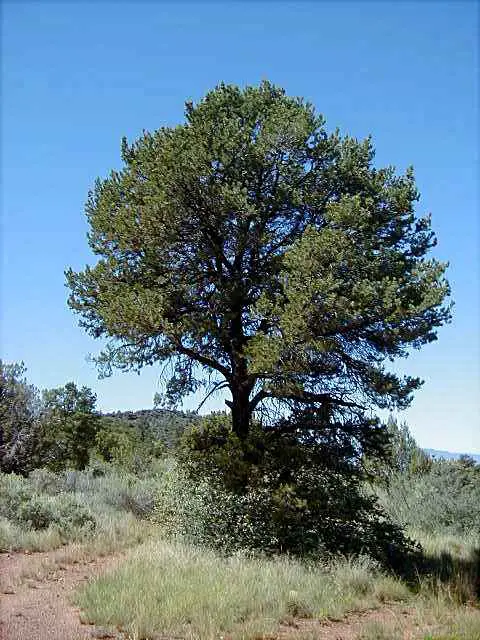Purple Mangosteen
The purple mangosteen, simply known as ‘mangosteen’ to the rest of the world, is a tropical evergreen tree. It is believed to have origated in the Sunda Islands of Indonesia. Purple mangosteen trees grow up to around 7 to 25 metres tall. They have a hard rind which is a deep purple when it is ripe, and the fruit is edible. The flesh of the fruit is citrusy, sweet, tangy, and has the texture and flavour that is similar a peach.
Juvenile mangosteen fruits do not require fertilisation. They appear as a plae green or sometimes white bud. Over a time span of 2 to 3 months, the fruit enlarges and its exocrap (hard skin) deepends to a dark green. It also increases to a size of about 6 to 8 cm in diameter until it ripens. Mangosteens have a recalcitrant seed, which must kept moist until it is viable to germinate. At the bottom of the exocarp, there are raised ridges which are actually the remnants of the stigma, that look like a wheel with spokes. These spokes correspond to the number of aril sections, or fruit segments.
In 1892, James Herbert Veitch wrote in Hortus Veitchii that mangosteens must be eaten “three to four degrees of latitude of the equator to realise all of the attractive and curious properties of this fruit”. This refers to the fact that prolonged periods to temperatures below 0°C will kill a mature mangosteen plant. It must be grown consistenly in warm conditions, although mature ones can stand a brief cold spell. Unfortunately, young trees will not.
Currently, there are ongoing import restrictions for mangosteens and therefore it is not readily available on the market in certain countries. They are available in Australia at the moment, but are rarely found in North American and European grocery stores. However, mangosteen and its related products such as nutritional supplements and juices are legally imported in the USA. However, they had an import ban on these items until 2007.
Mangosteens are currently readily available both frozen in canned in most western nations. They are restricted if the mangosteens, in their fresh fruit variety, have not been fumigated or irradiated. This is because there are fears the fruit may harbour the Asian fruit fly. As a result, freeze-dried and dehydrated mangosteens can be found. Since 2006, orders from American gourmet restaurants have been filled by Puerto Rican farms. In 2007, fresh mangosteens were sold for as high as $45 per pound in specialty stores in New York City. Meanwhile, the average mangosteen per pound in its original form would be around USD$1-2 per pound!
As they have a thick exocarp, you may be wondering how to eat it. Before the mangosteen ripens, its shell is both firm and fibrous. However, it can become soft and easy to pry when the fruit ripens. To open the mangosteen, you need to score its shell with a knife. After this, you hold the mangosteen in both hands and try to gently pry it open with your thumbs until the rind cracks. After this, it is easy to pull the halves apart and crack open to remove the fruit. However, be careful when you are opening it as the purple exocarp juice may stain fabric or skin.




